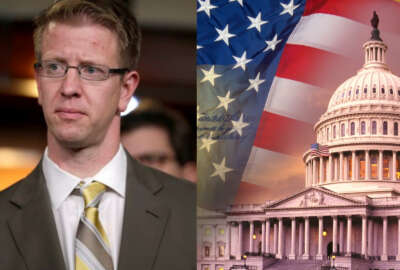State’s lack of middle managers risks diplomacy
The State Department has a gap in its work force. It has too few experienced, mid-level career foreign service employees. It's the result of several...
wfedstaff | April 17, 2015 3:59 pm
By Amanda Iacone
Federal News Radio
Looming budget cuts and the opening of new embassies in Iraq and Afghanistan have wiped out the State Department’s supply of middle managers.
To keep pace with retirements and other departures plus expand State’s ranks of foreign service workers, the department hoped to increase its workforce 25 percent by next year. Despite adding about 1,900 new overseas staff, hiring stagnated last year and the department isn’t expected to reach its goal for another 10 years, said Michael Courts, acting director for international affairs and trade issues at the Government Accountability Office.
The GAO reviewed why State lacks mid-level career foreign service members and offered some recommendations, Courts told The Federal Drive with Tom Temin and Emily Kopp.
Following the Sept. 11 terror attacks, the State Department dramatically increased its overseas staff to work at new embassies in Afghanistan and Iraq. But changing geo-politics and foreign trade has also put more demand on staffing Mexico, Pakistan and China. At the same time, experienced foreign service workers were retiring and State can’t get ahead of the pace of departures, Courts said.
So staff were pulled from other regions and young, first-time managers were assigned to posts above their experience level. The result has delayed negotiations, including with Russia over U.S. military transports, Courts said.
“Both the vacancies and the experience gaps affect our diplomatic readiness in a number of ways and none of them good. It risks the loss valuable institutional knowledge and also risks the loss of critical foreign contacts that we have overseas,” he said.
Younger staff lack institutional knowledge and don’t have the same key contacts as experienced managers. The combined lack of staff and lack of experience forces senior diplomats, including the ambassadors, away from other inter-agency and policy tasks, he said.
State is trying to close the mid-manager gap by expanding the use of civil service employees overseas and re-hiring retirees. The department is also providing workshops for first-time supervisors and providing mentoring opportunities, Courts said.
But the GAO report found the department needs to do more like develop a strategy to better take advantage of the flexible staffing options already available to them. They also need to evaluate whether they are meeting the department’s staffing goals, he said.
“State is currently developing plans to downsize its presence in Iraq over the next year or so, at least to some degree. I don’t think those numbers will be huge but it should further ease the problem,” he said.
As the new hires gain experience they will be able to fill mid-level positions and the staffing gap is expected to close in about four to five years, Courts said.
Copyright © 2024 Federal News Network. All rights reserved. This website is not intended for users located within the European Economic Area.





